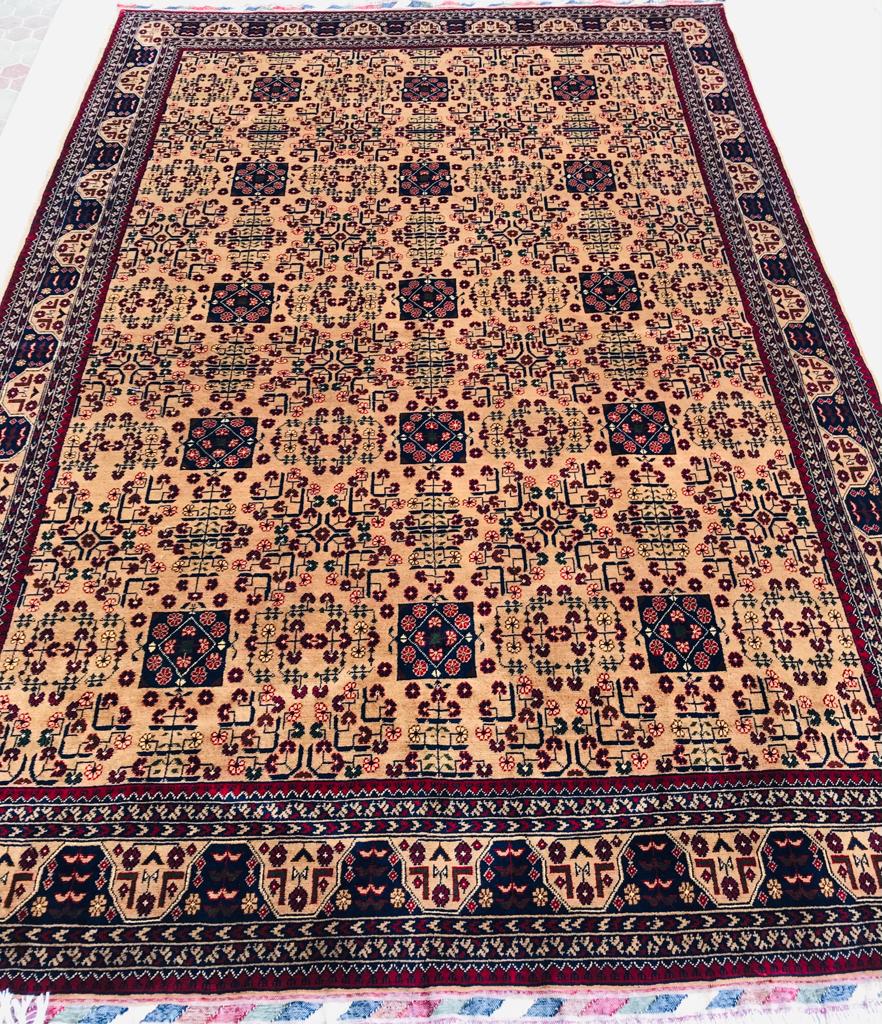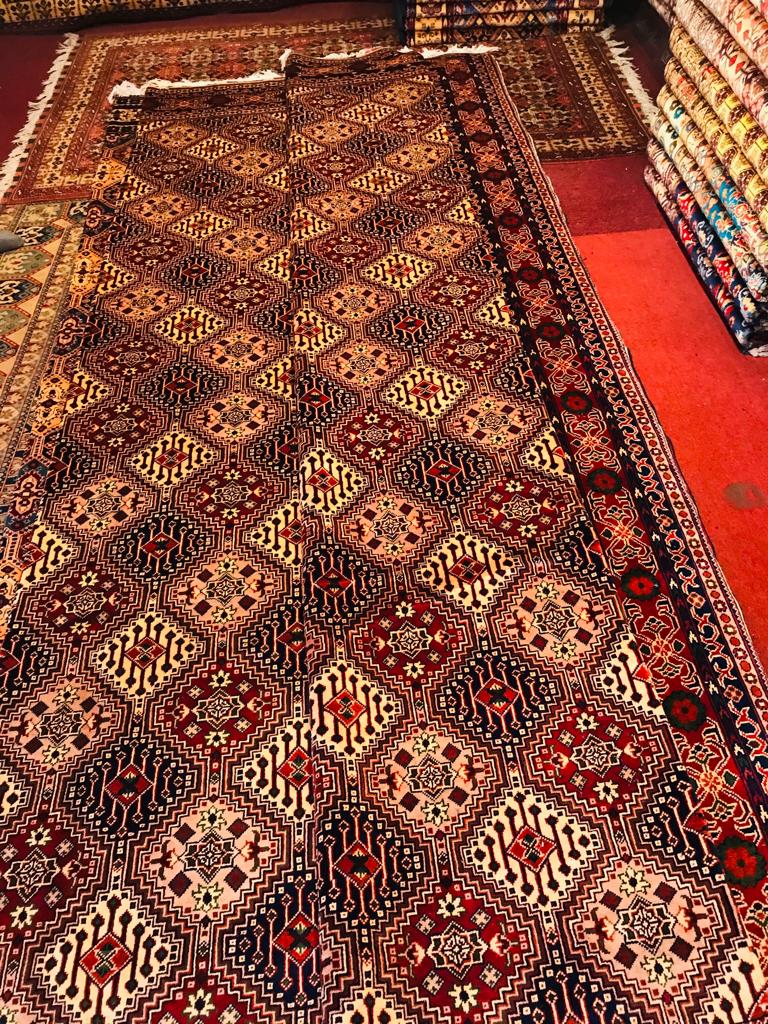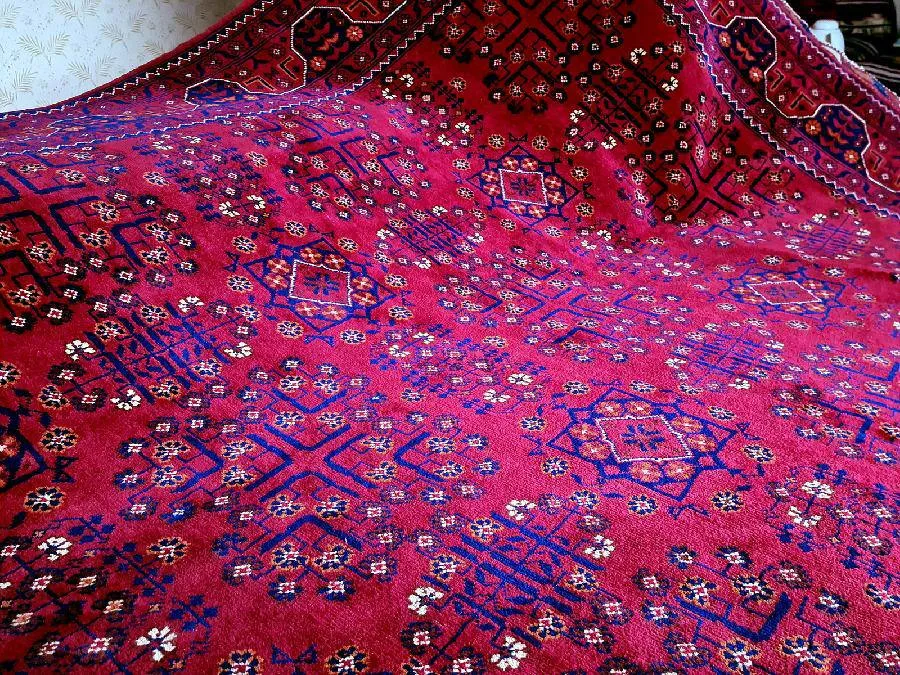Afghan rugs
Afghan rugs- an interdiction to Afghan rug tradition
Afghan carpets have a long and rich history. The art of carpet making in Afghanistan is thought to date back to the 16th century, when the Afghan people began to use carpets as a form of decoration and as a way to keep their homes warm during the cold winter months.
The country of Afghanistan has a historic penchant for creating beautiful high-quality rugs and carpets. Traditional Afghan rugs have been made in Afghanistan for hundreds of years in a diverse range of different styles. Traditional designs have stood the test of time, being passed down the generations, and are now being made by machine as well as the traditional technique of hand knotted. High quality rug products from Afghanistan have won them international rug awards as recently as 2014.
Afghan rugs and carpets are a specific type of hand-woven carpet textile traditionally made in Afghanistan. However, there are Afghan rugs and carpets that are produced by Afghan refugees in Iran and Pakistan. Rug makers across the whole region tend to describe their rugs based on ethnic groupings, hence why they are called Afghan rugs.
There are rug makers from many different ethnic groups such as the Uzbeks, Kazakhs, Kyrgyz & Azerbaijanian and they all name their rugs accordingly. Character traits of Afghan rugs are that they are individual, well made and often very expensive. The rugs are mostly of medium size and dyed using vegetable and natural dyes to achieve the rich colors. A myriad of different patterns and colors are used. A popular style is an octagonal (elephant’s foot) print shape with a deep red background.
KHALMOHAMMADI, BALUCHI, RUGS
Khal Mohammadi carpets take their name from someone called Khal Mohammadi. He developed the deep red tones characteristic of the style. The style’s ethos is to be warm and inviting and will also feature dark blue or black thread for fine detailing. Most of the time they use the repeating ‘elephant’s foot’ pattern in rows and columns. These rugs are produced by the Turkomans in northern Afghanistan who use wool in symmetrical knots at a relatively high density.
Baluchi prayer rugs are made by the Baloch people, based in the south and west of the country. Typical forms of Baluchi prayer rugs are denoted by their town of production. A prominent example is the Adraskan rug; Adraskan is located in the Herat province of Afghanistan. A defining characteristic of this particular style is the depiction of elongated animal and human forms. Many Baluchi carpet makers are also based in Iran in the Khorasan area. Some defining characteristics of a Baluchi rug include plant motifs woven in an angular geometric style, and like the Khal Mohammadi style, feature strong reds with dark edge detail. Occasionally tufts of camel hair are woven into the niches.
Although there are a lot of known Afghan carpet types it is often hard to know quite where specific carpets have been made or what styles can be attributed what tribe. Because of the extreme localization of carpet construction in Afghanistan and the previous nomadic history of the ethnic groups involved it is often hard to define clearly the different styles. There hasn’t been extensive study and research apart from a few Russian field studies, and so the categorization and the naming of Afghan carpets can be interchangeable.
Traditional rugs continue to inspire contemporary rug designers today.
Browse our Antique / Vintage / Classic range for some beautiful examples, or contact us for help and advice.
Afghan Rug:
Afghan rugs can be categorized based on carpet pattern, weaving technic, and material. At the highest level, we have handmade rugs & carpets and handmade flatweave kilims. Then we have modern rugs and traditional tribal rugs and finally, we have categorizations based on design.
BELGIAN WOOL
Belgian wool is high-quality wool imported to Afghanistan from Belgium. It has all four impotent characteristics: softness, silky-shiny, lightweight, and durability. It also allows artisans to weave rugs with a high knot count per square inch, adding to the rug’s quality. Belgian-wool yarn absorbs dyes perfectly, so it doesn’t have an Abrash effect. In recent years it has become popular to use this wool in Afghan hand-woven rugs. However, Belgian wool rugs are the most expensive.
Merinos WOOL:
Merino wool, also known as Pakistani wool, is a type of sheep wool commonly used in Afghan rugs. Merino wool yarn is machine spun-yarn, so it absorbs all the dyes meaning it doesn’t have the Abrash effect. Merino wool goes through a unique process to become soft and silky-shiny but doesn’t have Ghazni wool’s durability.
Ghazni Wool
Ghazni wool is well-known wool used in Afghan rugs. The wool comes from the Ghazni area but is not limited to this area. What distinguishes this wool from the other types of wool is the spinning and dying process that it goes through. After the wool is sheared and washed, it is spun by hand. In the hand spinning process, the artisans try to thin the yarn by spinning the wool so hard. After the wool becomes yarn, the yarn is dyed with natural dies. As a result of the hand-spinning process, some parts of the thread absorb less dye and some more. This defect creates the unique effect called the Abrash effect.
Rugs made of Ghazni wool are durable, beautiful, and have the distinguishing Abrash effect, but their surface is not soft compared to other wool rugs. Also, since the yarn is handspun, the knot count can’t be high on the carpet.




